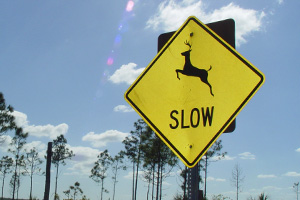UOIT lecturer talks deer to local media
May 16, 2014

Annette Tavares, Lecturer, Faculty of Science (FSci), was recently interviewed by Metroland Media about the dangers of migrating deer in the Durham Region.
In an article entitled Durham residents asked to beware of migrating deer, Tavares warns that because it was a hard winter, deer would be looking for any food they can find. She adds that when on the move to new feeding grounds, deer may cross roads and cut through backyards. They typically travel in groups during the first few months of spring, so the sight of one deer may signal the arrival of more. Tavares also said deer do most of their travelling at dusk or dawn, so drivers should be extra cautious during those hours.
"You'll see them in urban areas where their habitat has been fragmented," she said. "Habitat fragmentation is an important factor of how deer move around the city."
According to the article, deer are attracted to backyard gardens, but placing deer-resistant plants such as juniper, sumac, birch, dogwood, pine, daisies, geraniums and irises strategically around your garden can deter them. Deer also avoid plants with thorns, fuzzy or velvety leaves or a strong taste. Fences and dogs also help.
If you encounter a deer in your backyard and can't get it out, call the Ontario Ministry of Natural Resources at 1.800.667.1940.